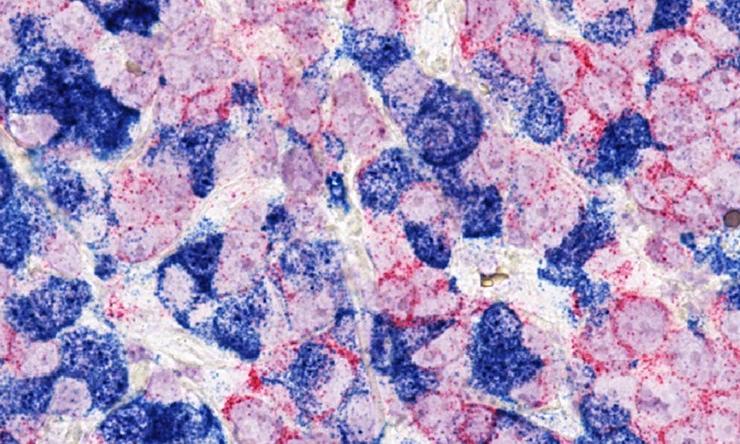Gene signature IDs drivers of treatment resistance in metastatic breast cancer
A multi-institution team of researchers led by scientists at Baylor College of Medicine has discovered a genetic signature that can identify drivers of poor outcomes in advanced estrogen-receptor positive (ER+) breast cancer, which could one day lead to personalized treatment for patients.
The 24-gene signature detects the presence of mutations and translocations in the ER gene that confer the tumor the ability to grow independently from estrogen and therefore unsusceptible to current therapies directed at disrupting estrogen-fueled cancer growth. The findings, published in Cancer Research, a journal of the American Association for Cancer Research, provide a new strategy to refine breast cancer diagnosis that could help guide a more precise selection of tumor-specific treatments.
“About 80% of all breast cancers depend on the hormone estrogen to grow. The hormone promotes tumor growth by binding to the ER,” said corresponding author Dr. Matthew J. Ellis, professor and director of the Lester and Sue Smith Breast Center and a McNair scholar at Baylor.
Disrupting the estrogen-ER interaction is a key therapeutic approach. Drugs such as tamoxifen and fulvestrant target the ER this way, but tumor cells learn to evade this attack and become resistant to these drugs.
“One of the predominant ways ER+ breast cancer cells evade treatment is by creating mutant ERs that no longer can be recognized and targeted by ER-targeting cancer drugs,” said first author Xuxu Gou, a graduate student in the Ellis lab.
The team has been studying ESR1 gene translocations, which refer to the ER gene swapping a part of its sequence with genetic information from another gene. ER gene translocations create chimeric ER proteins, meaning the protein contains only half of the ER protein and the other half comes from different protein. Some of the ER chimeras are extreme versions of mutant ERs because the drug-binding region, which is the same region estrogen binds to, is completely replaced with a region derived from another protein, to which neither the drug nor estrogen can bind. These ER chimeras trigger cancer activity in the absence of hormone.
“Not all ER translocations were active – some drive metastasis and resistance to treatment, but others do not,” Gou said. “To be able to determine whether any particular ESR1 translocation can promote disease progression, we developed a diagnostic genetic signature that detects the presence of an active ESR1 chimeric protein.”
With support from the National Cancer Institute’s PDXnet program, the team used genomics and transcriptomics to annotate 20 mouse models of ER+ patient-derived tumors that demonstrated different degrees of dependence on estrogen for growth. In this data set, a 24-gene signature detected the presence of an active ESR1 fusion, but interestingly also common point mutations in ESR1. These findings were replicated in data from a human metastatic breast cancer cohort. The team therefore called their 24 gene signature the MOTERA score for “Mutant or Translocated Estrogen Receptor Alpha.”
The findings are significant in the area of precision medicine, as they can provide specific details about the tumor that could guide physicians in the selection of more effective treatments.
“In the future, a patient’s cancer cells could be analyzed and, once the MOTERA score indicates the presence of an ER mutation or translocation, then the tumor cells would be further studied to more precisely determine what kind of ER mutant or translocation is present.
This would help guide the selection of a personalized, optimal treatment,” said co-author, Dr. Charles E. Foulds, assistant professor at Baylor’s Lester and Sue Smith Breast Center.
Ellis and Foulds are members of the Dan L Duncan Comprehensive Cancer Center at Baylor.
Other contributors to this work include Meenakshi Anurag, Jonathan T. Lei, Beom-Jun Kim, Purba Singh, Sinem Seker, Diana Fandino, Airi Han, Saif Rehman, Jianhong Hu, Viktoriya Korchina, Harsha Doddapaneni, Lacey E. Dobrolecki, Nicholas Mitsiades, Michael T. Lewis, Alana L. Welm, Shunqiang Li and Adrian V. Lee. The authors are affiliated with one or more of the following institutions: Baylor College of Medicine, Yonsei University Wonju College of Medicine, University of Cambridge, University of Utah, Washington University School of Medicine in St. Louis, University of Pittsburgh and University of Michigan.
See the publication for a complete list of the sources of support for this work.







 Credit
Credit


